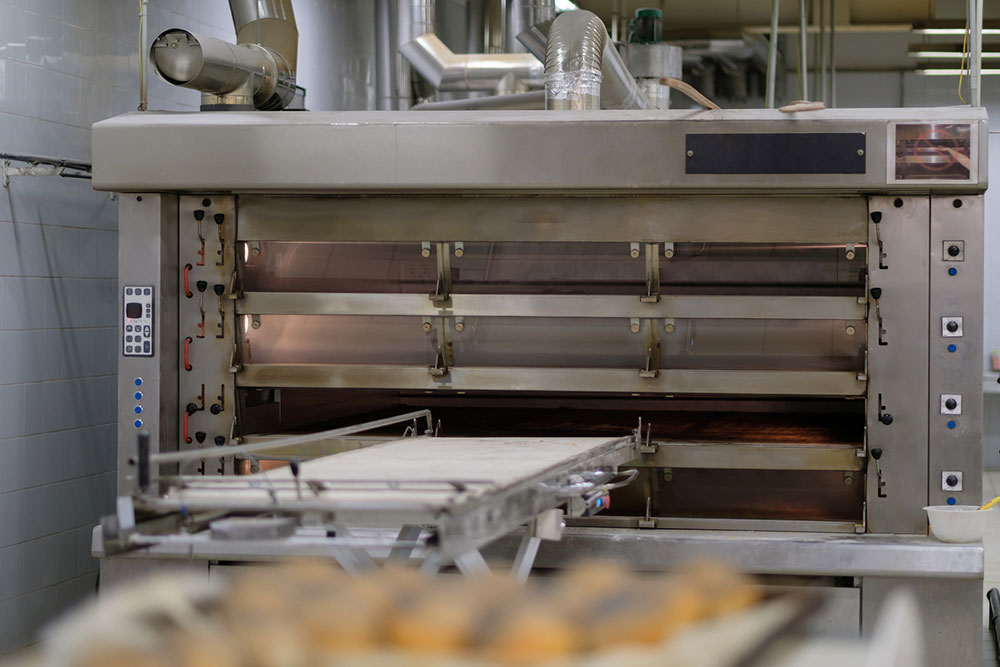10 problems to consider while repairing commercial gas ovens

Whether it is a big restaurant or a small streetside cafe, if the gas oven stops working for any reason, it can quickly disrupt operations. So, problems in a commercial gas oven can really hamper the functioning of any food establishment. This is why regular maintenance and repair is an important step here. The upkeep includes watching out for the following common problems that come up when repairing commercial gas ovens:
1. Pilot light does not stay on
While repairing a commercial gas oven, the thermostat is sometimes not positioned correctly. This is a common problem that can develop due to an oversight interrupting the functioning of a pilot light. Here, the thermostat component is possibly not connected to the flame when the pilot is lit. So, it is not hot enough to open up the safety valve. In most cases, simply adjusting the thermostat will resolve the issue. However, at times, the component could be damaged and broken and may need a replacement.
2. Oven is not hot enough
Sometimes, a gas oven does not heat up sufficiently after repairs or maintenance. If, even after turning up the temperature, the oven doesn’t get hot enough, the problem could lie in the calibration of the thermostat. Every oven has its own calibration procedure, which can be found in the operations manual. Once the right procedure is followed here, the oven should start to heat up as it should. However, if the oven is still not hot enough after the calibration, the thermostat could have been damaged or broken. In such cases, one should reach out to a professional to replace the thermostat.
3. Oven gets too hot
A gas oven can get too hot even when it has been set at low temperatures. Here, the oven continues to heat up even after cranking down the temperature. This is also linked to incorrect calibration of the thermostat. To avoid this issue, one should follow the manufacturer’s calibration guidelines after a repair or maintenance procedure. Also, one should check if the thermostat has been damaged and needs to be replaced.
4. Oven doesn’t heat up at all
At times, the oven may be switched on but does not seem to heat up. This usually happens when the gas oven’s power switch has broken and needs to be replaced. One can engage the services of a professional who can inspect the oven door and look for a damaged microswitch or hinges. The gasket could also be cracked or broken. Further, if the oven door does not close completely, the oven will not switch on. All of these issues can cause the commercial gas oven not to heat up at all.
5. Interruptions in gas supply
All commercial gas ovens require a constant and consistent supply of gas to function optimally. If there are any interruptions in the gas flow or a drop in the level of gas, the oven may not heat up at all or generate uneven heat. The disrupted supply may develop due to problems with the supply line or because the gas valve is faulty.
6. Poor heat retention
Sometimes, commercial gas ovens are unable to efficiently retain heat after maintenance or repair. This increases the appliances’ energy consumption, leading to higher gas bills. In addition, the cooking times are affected. The quality of food may also change, leading to customer dissatisfaction. So, this issue needs to be addressed promptly. Poor heat retention usually develops due to damage to the seals or gaskets in the door, which may have been overlooked during the repair or maintenance process.
7. Dirty or clogged burners
It is easy to overlook the burners when experiencing a snag. However, with prolonged use, the oven burners accumulate carbon deposits, debris, and grease, which can hinder the flow of gas and affect ignition. So, it is important to regularly clean and maintain burners to keep up optimal oven performance.
8. Excessive gas odor
If there is an unusual smell of gas emitted by the oven, it may be a sign of a gas leak. Here, to eliminate the risk of fire, it is important to immediately address this safety hazard and call in professionals to fix the leak.
9. Electronic control board failures
Most modern and contemporary gas ovens come with electronic control boards, which are connected to various switches, knobs, and other controls that help in operating the oven. The boards can malfunction in response to moisture, power surges, or regular wear and tear. Such snags can result in operational failure or suboptimal functioning of the gas oven.
10. Igniter keeps clicking
If the ignition of the gas oven keeps on clicking continuously even after one can see the flame, there could be an issue with the ignition switch. Exposure to moisture over time can result in this problem. While the clicking may not affect the functioning of the oven, the unwanted, persistent noise can get irritating. So, one should call a professional to check and replace the switch. Also, in some cases, if this issue is not addressed in time, the oven’s ignition system might be at a higher risk of serious damage.



